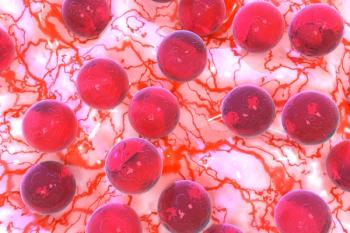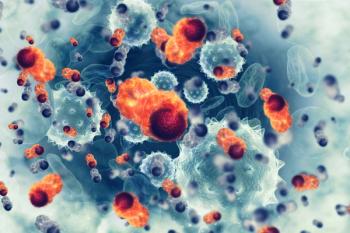
Oncology NEWS International
- Oncology NEWS International Vol 9 No 3
- Volume 9
- Issue 3
IL-13 Used to Deliver Bacterial Toxin to Brain Tumors in Mice
An innovative approach to treating glioblastoma multiforme-the use of a bacterial toxin attached to interleukin-13 (IL-13)-has been tested in animals, and a phase I study
HERSHEY, PennsylvaniaAn innovative approach to treating glioblastoma multiformethe use of a bacterial toxin attached to interleukin-13 (IL-13)has been tested in animals, and a phase I study should begin this year, Waldemar Debinski, MD, PhD, said at the annual seminar of the Council for the Advancement of Science Writing, a science journalists group.
Dr. Debinski, assistant professor of surgery and of microbiology and immunology at Pennsylvania State University, where the agent is being developed, emphasized that there are no effective treatments available for glioblastoma multiforme, a high-grade glioma. Mean survival has increased only from 6 to 9 months in 1932, to less than 12 months in 1989. After 2 years from diagnosis, almost all patients have died, he said.
The new approach to treating glioblastomas emerged from a discovery by Dr. Debinskis team regarding IL-13, a growth-hormone-like cytokine (see figure). They found that among more than 60 individuals with high-grade gliomas, the vast majority of patients overexpressed the receptor for inter-leukin-13.
Previous to this finding, no tumor-specific antigens or receptors were known to be overexpressed in glioblastoma multiforme cells to such an extent.
This discovery led to the idea of incorporating a Pseudomonas toxin into IL-13 as a way of delivering a killer dose to the cancer cells. Studies showed that among mice implanted with human gliomas and then treated with the toxin-IL-13 combination, 40% remained alive at 5 months, while control mice survived only 6 weeks.
Dr. Debinski hopes that the phase I trial will begin at a number of institutions in the summer of 2000. We have a collaborative agreement with the brain tumor consortium supported by the NCI, he said.
Articles in this issue
almost 26 years ago
Rituximab/CHOP Combo Effective in Low-Grade NHLalmost 26 years ago
3D CT-Guided Seminal Vesicle Biopsy for Stagingalmost 26 years ago
Elderly Patients Tolerate Breast Cancer Therapyalmost 26 years ago
Coaxial Breast Biopsy Device Provides Diagnostic Specimensalmost 26 years ago
3D Digital Camera Accurately Calculates Breast Shape, Volumealmost 26 years ago
Thermoacoustic CT Under Development for Breast Imagingalmost 26 years ago
Early Local Recurrence After Lumpectomy Predicts Metastasisalmost 26 years ago
Panel Recommends Listing 9 Substances in Carcinogen Reportalmost 26 years ago
State of the Union on Youth Smoking ‘Clearly Not Good’Newsletter
Stay up to date on recent advances in the multidisciplinary approach to cancer.


















































































